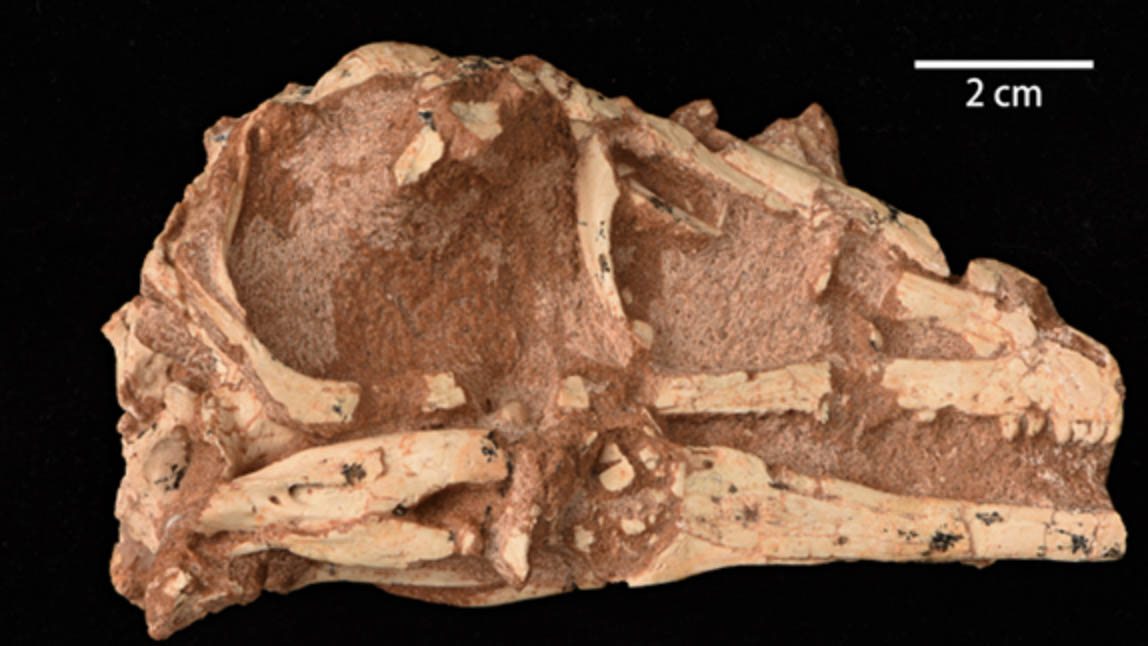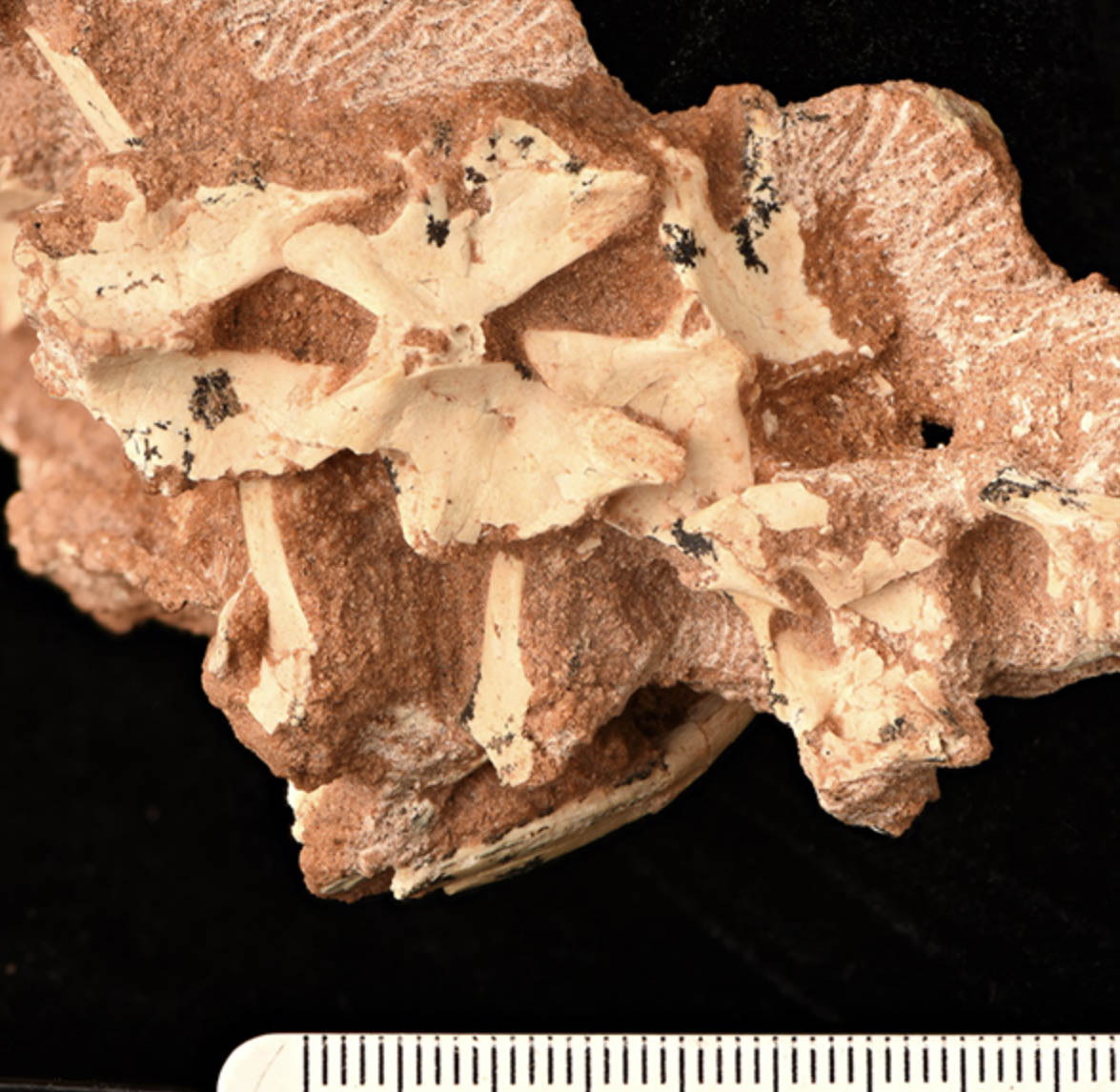
The right side of the cranium. /Screenshot from Institute of Vertebrate Paleontology and Paleoanthropology
The right side of the cranium. /Screenshot from Institute of Vertebrate Paleontology and Paleoanthropology
Chinese paleontologists announced the discovery of a new dinosaur with a unique butterfly-shaped neural arch of the anterior-most dorsal vertebrae, which makes it distinguishable from other troodontids.
The research team found new troodontid dinosaur, Papiliovenator neimengguensis's holotype, in north China's Inner Mongolia Autonomous Region. The holotype consists of a nearly complete cranium, with a total length of 12 centimeters and fragmentary postcranial bones. Its body length reaches 1 meters.

The butterfly-shaped neural arch. /Screenshot from Institute of Vertebrate Paleontology and Paleoanthropology
The butterfly-shaped neural arch. /Screenshot from Institute of Vertebrate Paleontology and Paleoanthropology
Pei Rui, a researcher with the Institute of Vertebrate Paleontology and Paleoanthropology of the Chinese Academy of Sciences, said the dinosaur, living in the upper Cretaceous period about 83 million to 70 million years ago was in the subadult stage, which is the key time for both individual development and population evolution.
The discovery is important for the study on biodiversity of land-living creatures and paleoenvironmental change in Northeast Asia in the Late Cretaceous, Pei added. The online version of the discovery was published in "Cretaceous Research" in October.
(If you want to contribute and have specific expertise, please contact us at nature@cgtn.com.)
Source(s): Xinhua News Agency

